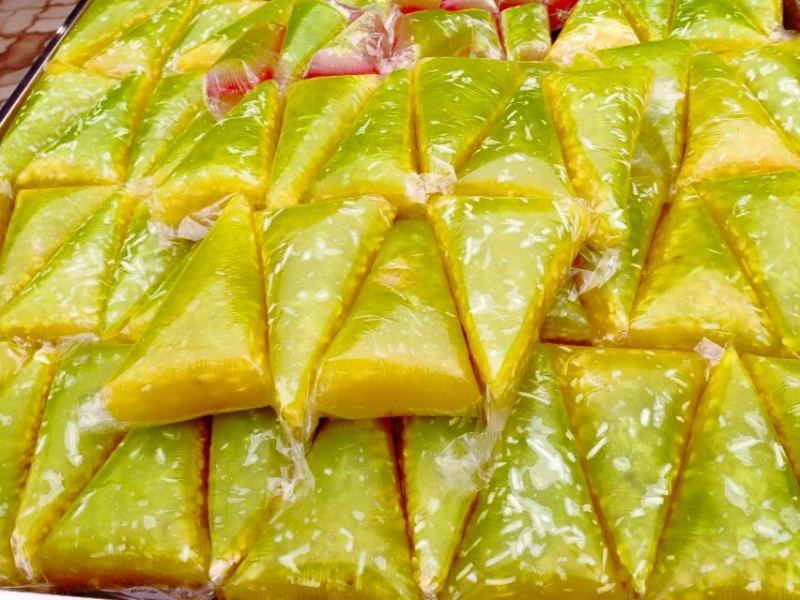Banh phu thi (also known as banh xeo or banh xeo) is a traditional Vietnamese sweet. Dinh Bang is a place associated with the development of the Ly dynasty and the first place to make this type of cake. Why is it called banh phu mi, it is said that during a village festival in Dinh Bang, Ly Thanh Tong and his wife Nguyen Phi Ỷ Lan returned to their hometown for a ceremony in Do Temple and were offered a kind of cake by the villagers. After enjoying, the King and Nguyen Phi both had to praise it. People think that if they can eat cake, the family will be happy. From then on, in the weddings of Kinh Bac people in particular and Vietnamese people in general, cakes must be present.
If you want to have a delicious cake, you must choose a delicious yellow flower sticky rice. The yellow color of the crust is made up of gardenia flowers. The baker brings the gardenia flowers to dry, when making the cake, soak it in boiling water to extract the yellow color, mix this water into the flour to make the cake color. The cake is wrapped with two types of leaves, the inside is a banana leaf layer, the outside is a layer of coconut leaves. The green wrapping represents fidelity, the pink ribbon is like a connecting thread, and the yellow cake represents the wife’s love for her husband.

Source: Collected internet.
The specialties of each region of Vietnam carry within themselves the local lifestyle and the quintessence of nature there. The North cherishes delicate recipes, like a delicious bowl of bun thang that must be prepared for many hours. In the Central region, royal culinary traditions and typical spices blend in unique dishes such as lotus rice or spring rolls. Southern braised fish and sour soup come from abundant seafood resources, the pride of the Mekong Delta.
According to the ups and downs of the nation's history, Vietnamese customs and practices are constantly being innovated according to social trends. One of the oldest and most influential customs in history is the custom of chewing betel. This is a custom that dates back to the Hung King period and originates from the legend of Trau Areca and this custom has become a typical image of the brotherhood and love between husband and wife of Vietnamese people. Not only the custom of chewing betel, Vietnam also has another custom that was born in ancient times, which is the custom of welcoming the new year, also known as Tet - traditional Tet.
Vietnam - a country winding in an S shape on the East Sea coast, has 54 ethnic groups with resilient, indomitable people, standing tall in the face of many wars of invasion; A country with lands with thousands of years of history. With beautiful natural scenery and precious and abundant natural resources, we - the children of Vietnam - are often proud when talking about our Fatherland, our homeland. Listeners are invited to join VOVLIVE to experience the beauty of the country and
The relic cluster of Ba Om Pond, Ang Pagoda, and Museum of Khmer Ethnic Culture located in Ward 8, Tra Vinh city is a famous scenic spot, cultural and historical relic of Tra Vinh province as well as the whole region. Mekong Delta region. This is also the pride of the KhMer bronze treasure.